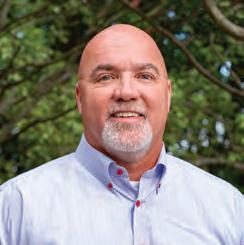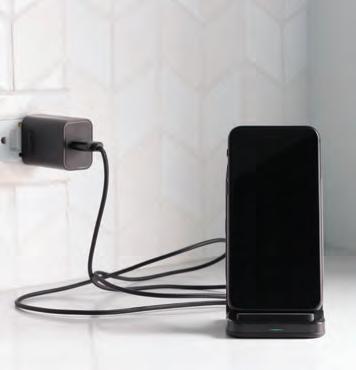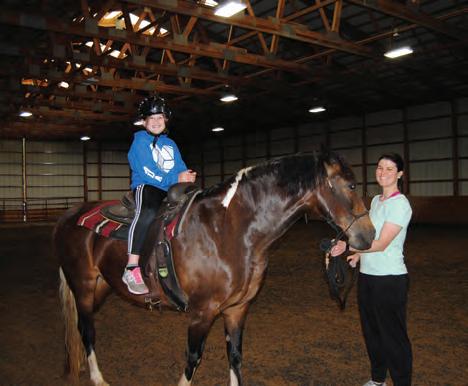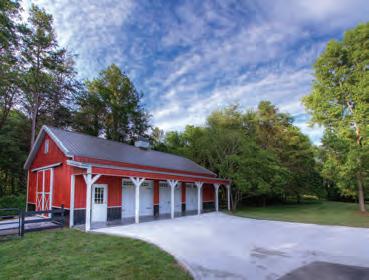

rural uplifting















All onboard meals and
Full enrichment
All tips and gratuities







Immerse yourself in the sights, sounds, and tastes of New England. From quaint island villages to the breathtaking beauty of the coastline, summer in New England is a truly delightful experience. Discover the region’s rich maritime heritage, savor a traditional Lobsterbake, and marvel at grand mansions of the Gilded Age. Return to the comfort of your onboard sanctuary and bask in the warm camaraderie of fellow guests and crew.


(ISSN 0008-6746) (USPS 832800) Volume 57, No. 9
Published monthly by
3400 Sumner Blvd., Raleigh, NC 27616-2950
Scott Gates, CCC Editor
Warren Kessler Creative Director
Renee C. Gannon, CCC Senior Associate Editor
Rue Reynold Editorial Assistant
Jessica Armstrong Graphic Designer
Tara Verna Creative Services Associate
Donna Natosi Digital Strategist
Keith Alexander Advertising Keith@carolinacountry.com
Joseph P. Brannan Executive Vice President & CEO
Kristie Aldridge, CCC Senior Vice President & COO
North Carolina’s electric cooperatives provide reliable, safe and affordable electric service to 1 million homes and businesses. The 26 electric cooperatives are each member-owned, notfor-profit and overseen by a board of directors elected by the membership.
Why Do We Send You Carolina Country Magazine?
Your cooperative sends you Carolina Country as a convenient, economical way to share with its members information about services, director elections, meetings and management decisions. The magazine also carries legal notices that otherwise would be published in other media at greater cost. Your co-op’s board of directors authorizes a subscription to Carolina Country on behalf of the membership at a cost of less than $6 per year.
Subscriptions: Individual subscriptions, $12 per year. Schools, libraries, $6.
Carolina Country is available on digital cartridge as a courtesy of volunteer services at the NC Department of Cultural Resources, Library for the Blind and Physically Handicapped, Raleigh, NC 888-388-2460.
Periodicals postage paid at Raleigh, NC, and additional mailing offices. Editorial offices: 3400 Sumner Blvd., Raleigh, NC 27616-2950. Carolina Country® is a registered trademark of the North Carolina Association of Electric Cooperatives, Inc. POSTMASTER: Send all UAA to CFS. (See DMM 707.4.12.5); NON-POSTAL AND MILITARY FACILITIES: Send address corrections to Carolina Country, 3400 Sumner Blvd., Raleigh, NC 27616-2950.
All content © Carolina Country unless otherwise indicated.
Contact us
Phone: 919-875-3091
Mail: 3400 Sumner Blvd. Raleigh, NC 27616-2950
Web: carolinacountry.com
Social:
Email: editor@carolinacountry.com
Change of address: Please contact your electric co-op or go online to carolinacountry.com/address
Experiencing a power outage?
Please contact your electric co-op directly to ensure prompt service. Visit carolinacountry.com/co-ops to find yours online.

10
22
Uplifting Rural Tourism
A nonprofit is helping NC communities shine.
Carolina Voices
What’s your most embarrassing moment?
24 ‘Where
Kids Can Just Be Kids’
Camp Carefree offers a safe, fun camp experience.
Jennifer Everett of Culture Queens Outdoors at Grogan Creek Falls in Transylvania County. Jennifer’s nonprofit, which encourages equity in outdoor adventure, participated in an inaugural incubator program to promote rural tourism across the state. Read more on page 10. Photo courtesy of Culture Queens Outdoors.
Carolina Voices
Ever received a bad gift? If so, hopefully it’s one you can look back on and laugh about. We want to hear your story for our December issue — learn more on page 23.
From Our Readers
Remember ‘Leather Britches’?
I wanted to share this [from The Appalachian Project] … My mother and grandmothers did this along with canning or drying anything that grew!
Ruth Nesbitt, New Bern, a member of Carteret-Craven Electric Cooperative
“Leather britches are a traditional Appalachian way of preserving green beans, a method that dates back generations. Also known as ‘shuck beans’ (often called ‘shucky,’ if you’re really country enough) or ‘fodder beans,’ leather britches are made by stringing fresh green beans on thread and hanging them up to dry in the sun or in a well-ventilated area. This drying process gives the beans a wrinkled, leathery appearance, which is how they earned the name ‘leather britches.’
“Once dried, the beans can be stored for months, making them an essential food for Appalachian families who relied on preserved goods to get through the winter. When it came time to cook them, the beans would be soaked overnight and then slow-cooked with ingredients like ham hocks, bacon or fatback, infusing them with rich, smoky flavor. The slow-cooking process
re-hydrates the beans, softening them and giving them a unique, hearty taste that’s different from fresh green beans.
“Leather britches are a classic example of Appalachian ingenuity — using simple techniques to make food last and stretch through the seasons. Today, they’re still a favorite dish for those who appreciate the old ways of cooking, a reminder of the resourcefulness and traditions that have shaped life in the Appalachian Mountains.”
—Shane Simmons and Melody Blackwell-West, realappalachia.com
Co-op Heroics
I want to thank you for the professional quality and informative content of your monthly news magazine. I enjoy reading the articles and appreciate recipes and updates in the content.
Carolina SNAPSHOTS

A B C


THIS MONTH:
Rural Tourism
Now there’s nothing wrong with exploring a new city — and North Carolina has plenty of urban gems. But is it just me, or are some of the best travel memories made in the small towns and wide-open spaces between the cities? In this issue we hear from rural communities that have benefited from tourism, as well as how electric co-ops and others are helping promote them. Also, Camp Carefree is making a real difference in the lives of children with chronic illnesses and disabilities. Learn more on page 24.
—Scott Gates, editor
After Hurricane Helene hit last year, we saw the hard work and dedication of the NC Cooperatives jump into action. What heroics! When our power goes out, we feel confident it has the attention of Blue Ridge Energy and we will have it restored ASAP. Keep up the good work!
Christina Ross, Valle Crucis, a member of Blue Ridge Energy
THEME
Fairs & Festivals
A Sandra Head, Goldsboro
A member of Tri-County EMC
B Robert Bowen, Edenton
A member of Albemarle EMC
C Clarke Cochran, Indian Trail
A member of Union Power
Submit your photo!
Nov. theme: That was delicious (Deadline Sept. 20)
Dec. theme: Family (Deadline Oct. 20)
Jan. theme: Keeping Cozy (Deadline Nov. 20)
Send us your best shots based on an upcoming theme — we’ll pay $25 for those published. Submit high resolution digital photos and find full terms and conditions at carolinacountry.com/snapshots (no emails, please). We retain reprint and online rights for all submissions.




Powering More Than Homes
By Dennis Mabe

North Carolina’s 26 electric cooperatives serve 2.8 million members across 93 counties. While we share a core mission to deliver reliable, affordable electricity, we’re also deeply invested in the growth and vitality of the communities we serve, especially when it comes to rural tourism. Tourism might not be the first thing people think of when they hear about an electric cooperative, but we understand how powerful it can be as a boost to our local communities.
Last year, North Carolina was the 5th most visited state for domestic travel, with nearly $37 billion in visitor spending. Nearly 20% of counties — both urban and rural — saw higherthan-average growth in visitors, according to the NC Department of Commerce.
Tourism adds energy to our local economies.
Asheboro, the central home to my co-op, Randolph Electric Membership Corporation (REMC), is one example of how tourism can revitalize a rural region. Considered the gateway to the “Heart of North Carolina,” Asheboro was named a North Carolina Main Street Community in 2020 and has made a focused effort to preserve its historic charm while encouraging local investment, entrepreneurship and foot traffic downtown. Just a few miles away is one of our state’s greatest assets, the North Carolina Zoo. As the world’s largest natural-habitat zoo, it welcomes nearly a million visitors annually and it provides key support for local lodging, dining, retail and more. To enhance that experience a bit more, REMC partnered with the Zoo to install electric vehicle (EV) charging stations at both main entrances. These stations encourage longer visits, and that ultimately helps give our local businesses a boost.
REMC also helped bring one of the first electric tractors in North Carolina to the Zoo, and we sponsor community events there that showcase emerging energy technologies, such
as the National Drive Electric Month event in the fall, where people of all ages get hands-on exposure to electric vehicles and plug-in hybrid automobiles. This event grows larger each year and attracts people from all over the region and beyond. Happenings like these also help strengthen our relationship with the Zoo by reinforcing its mission of environmental sustainability.
You’ll find co-op investments like this all across the state, including through education and outreach — bringing energy education to schools, supporting youth programs and participating in events that celebrate what makes our regions unique. These may not seem like initiatives related to tourism, but there’s actually a strong relationship. These efforts build pride, awareness and connection in our youth that reveals itself in interactions with visitors to rural communities. It also equips our youth for their own travels to areas away from home, making them better ambassadors of rural North Carolina.
So whether someone is attending a county fair, enjoying a walk through a historic downtown area or simply interacting with the good people living in rural North Carolina, tourism adds energy to our local economies. And at Randolph EMC, we are proud to help keep that energy flowing!
Dennis Mabe is the CEO for Asheboro-based Randolph EMC.
•
•
Easy to use.
Jitterbug® phones feature large screens with big text, simple menus with effortless navigation, powerful speakers and Urgent Response buttons. The Jitterbug® Flip2 has big buttons with one-touch speed dialing, while the Jitterbug® Smart4 comes with voice typing, video chat and internet access.
Easy to get help.
Whether you want to learn more about your phone, need a ride or have a health concern, our 100% U.S.-based team is here to help, day or night. And when you add Urgent Response, enjoy peace of mind knowing you can count on us 24/7, even in an emergency.

September Quick Hits
Celebrating Heritage
Sept. 15 marks the start of National Hispanic Heritage Month, the date in 1821 that Costa Rica, El Salvador, Guatemala, Honduras and Nicaragua declared independence from Spain.
Safe Sports
Every three minutes a child in the U.S. is treated for a sportsrelated concussion. Know the warning signs and visit nsc.org for more information.
Grillmaster Favorites
Got a cookout planned for Labor Day? We’ve got recipes to make your grill the center of attention at carolinacountry.com/grilling
Binoculars Ready!
Bird migrations begin in August and heat up in September, especially as birds in NC’s Mountain and Piedmont regions depart on long flights south.
Stay Connected this Hurricane Season
During power outages and storm recovery efforts, communication with loved ones and emergency responders can be “just as critical as food and water,” according to the Federal Communications Commission (FCC). Here are some tips from the FCC for staying connected.
Charge smart
Keep phones, power banks, laptops and backup chargers fully charged if severe weather is forecasted for your area.
text, don’t call

When networks are overloaded, texts are more likely to go through than voice calls. Consider messaging apps with offline or low-data capabilities. Some newer smart phones are equipped to send text messages via satellite. Check with your provider regarding compatibility and how to use the feature, especially if you have a select model from Apple (iPhone 14 and later), Google (Pixel 9 series) or Samsung (Galaxy S25 series).
Know how to reach help
Dial 911 for real emergencies only, and check with your local public safety authorities to confirm if your area supports text-to-911.
Get emergency alerts
Enroll in your local community’s emergency alert system, if available. Check phone settings to ensure it’s enabled to receive Wireless Emergency Alerts (WEA).
make a ‘pACe’ plan
Develop a “Primary, Alternate, Contingency and Emergency” (PACE) communication plan. Include options like cellular service, social media or messaging apps, satellite phones, and handheld radios (family radios or walkietalkies). Coordinate your plan with family and loved ones, so everyone knows how to stay connected if one method fails.

NC Co-ops and Employees Donate for Storm Recovery Support
In the fall of 2024, Western North Carolina was struck by one of the worst natural disasters the region had ever seen when Hurricane Helene made landfall, bringing historic flooding and causing unprecedented damage.
The impact of this event will never be forgotten — but just as lasting is the memory of how individuals, co-op employees and affiliated organizations came together in the face of hardship to support affected communities and demonstrate the cooperative principles of Concern for Community and Cooperation Among Cooperatives.

One way co-op employees can show support is through the Human Connections Fund. Established in 2005, the fund gives employees of North Carolina’s electric cooperatives and co-op affiliated organizations the opportunity to join together and help sister cooperatives and their communities when disaster strikes.
“Being a part of the Human Connections Fund has always been meaningful, knowing it was helping others,” said Jeff Brittain, general manager of Rutherford EMC. “But when that support reaches people right here at home, it takes on an even deeper significance.”
The fund was activated just days after Hurricane Helene hit western North Carolina, and co-op employees raised a record-setting amount of $300,000 in contributions from 20 states.
“We are thankful to all of the cooperatives and cooperative employees who gave to this great cause,” said Tom Batchelor, CEO of Haywood EMC.
The money raised directly supported the recovery needs of co-op employees who, despite experiencing their own devastation from Helene, continued to work to serve their co-ops and communities. Additional funds were donated to local nonprofits and community organizations across Western North Carolina on behalf of Blue Ridge Energy, French Broad EMC, Haywood EMC and Rutherford EMC

— four electric cooperatives whose communities suffered some of the worst damage from Helene.
“Through these generous donations, we are able to support these organizations that have contributed so much to the recovery efforts that began immediately following the storm,” Batchelor said. “Since day one, these organizations have provided temporary shelter, rebuilt damaged homes, built brand-new homes, served countless meals and reached out again and again to our neighbors in need.”
Although significant progress has been made, continued support is essential to sustaining recovery efforts and addressing ongoing needs.
“We are so proud to be part of a cooperative family that truly cares about our employees and neighbors,” Brittain said. “Living and working in this community, we see firsthand that recovery is still a long way off for many. With so many needs remaining, we want to continue doing all we can to support those in need.”
—Josh Conner, North Carolina’s Electric Cooperatives
HUMAN CONNECTIONSFUND
Get Behind the Wheel of an EV
Considering an electric vehicle? National Drive Electric Month, Sept. 12 – Oct. 12, is an opportunity to learn more about EVs through in-person and online events, many hosted by electric cooperatives. Visit driveelectricmonth.org to find events near you.



Get Your Destination Guide Here! Your adventure begins with mandatory “pit stops” at B’s, Skylight Inn, Sam Jones BBQ and all the places that put whole hog ‘cue on the map. Make it a picnic in Town Common, lose yourself in the Downtown District and explore one-of-a-kind art sculptures along Dickinson Avenue. NC’s Emerald City is filled with countless hidden gems. Find yours at VisitGreenvilleNC.com








COUNTY

Savor
Savor
www.visityadkin.com



ural communities across North Carolina are receiving a lift in their tourism efforts thanks to a unique program. That program, UPLIFT (an acronym for “understanding, planning, linking, innovating, financing and talent”) is spearheading communitydriven tourism initiatives in North Carolina. This is accomplished by assisting local tourism offices and tourism-related businesses through a variety of services.
The ultimate goal of tourism, particularly in NC’s rural areas, is economic development — creating jobs, supporting businesses and boosting economies that have experienced turbulence during an era of globalization. After all, it’s one industry that can’t be offshored.
“Tourism makes a tremendous impact on our rural economies,” says Travis Bode, economic development manager for SurryYadkin EMC. “This includes agritourism at area farms and wineries, and recreational tourism revolving around trails, waterways and other outdoor activities. It brings revenue to our region, which supports jobs for our member-owners and small businesses.”
Statewide reach
UPLIFT arose from the American Rescue Plan Act (ARPA) during the Covid-19 pandemic. Since its founding in 2021, the organization has produced results in many ways, including promotional videos for destinations, assistance with marketing, publicizing activities and events, mentoring small-market tourism directors and generating media coverage of tourism activities in five core regions of the state. It’s the brainchild of Simon Jones, founder of NatureScapes in Raleigh, an organization that unites industry experts to build sustainable tourism




UPLIFT has been an incredible asset for our rural tourism efforts … the resources and guidance are especially important for small destinations like ours that don’t have large in-house marketing teams.”
—Angela Allen
destinations, and Carol Kline, director of the Hospitality and Tourism Management program at Appalachian State University.
The organization has been a gamechanger for the executive director of the Granville County Tourism Development Authority (visitgranvillenc.com). Angela Allen credits the organization for helping her develop visitor itineraries, improve social media efforts, enhance storytelling, plan events and strengthen regional alliances.
“UPLIFT has been an incredible asset for our rural tourism efforts,” Angela says. “The resources and guidance are especially important for small destinations like ours that don’t have large in-house marketing teams.”
Angela says UPLIFT has also made an impact in the realm of social media.
“Our participation in a social media audit significantly improved how we plan, post and engage online. It gave us a roadmap to elevate our content and connect more effectively with our audience,” she explains. “It also helped justify
contracting a professional social media coordinator to manage our platforms and implement these strategies with consistency.”
Recent tourism spending figures show the program is making an impact in Granville County. In 2022, the year the county began with UPLIFT, Angela says visitor spending increased 17.8% from the previous year, placing the county among the leaders statewide for visitor spending growth. That upward trend continued in 2023, as visitor spending in Granville County reached $60.8 million, a 3.5% increase over 2022.
“While several factors contributed to this growth,” Angela says, “I believe the strategies and tools we’ve gained through UPLIFT have absolutely played a role in increasing our visibility and tourism impact.”
Promoting connections
Operating with ARPA funding from the North Carolina Department of Commerce,
Continued on page 12

organization for helping her develop visitor itineraries, improve social media efforts, enhance storytelling, plan events and strengthen regional alliances.
Angela Allen credits the

UPLIFT has supported us most in visibility, storytelling and strategic relationshipbuilding.”
—Jennifer Everett, Culture Queens Outdoors


UPLIFT provides services to all tourism and recreation entities in the state, with an emphasis on 21 rural counties across five regions: Caldwell, Wilkes, Surry and Yadkin in the Yadkin Valley; Stanly, Montgomery and Richmond in the Sandhills; Caswell, Person, Granville and Vance along the Virginia border; Columbus, Robeson, Bladen and Sampson in southeastern North Carolina; and Edgecombe, Martin, Washington, Bertie, Chowan and Hertford in the state’s northeast corner.
In Sampson County, UPLIFT works with the Coharie Tribe (coharietribe.org) to spread the word about Coharie River Tours, a kayaking guide service for visitors to explore nature and connect with the outdoors.
“It’s an incredible experience,” UPLIFT Program Lead Simon Jones says. “You go out with a member of the Coharie Tribe and kayak down the river while they’re talking to you about the connection of the tribe with the river, as well as the history of the area and the wildlife.”
This has led to an increase in tour participation. Visitors choose from shorter, two-hour paddles, or longer versions that go to Three Sisters, a Bald Cyprus swamp with trees dating back more than 2,600 years.
Jennifer Everett in Richmond County participated in UPLIFT’s inaugural incubator program. She owns Culture Queens Outdoors (cltqueens.com), a Black, women-focused nonprofit that encourages equity in outdoor adventure by hosting retreats, hikes, fireside chats and cultural experiences in places often overlooked by mainstream tourism.
“UPLIFT has supported us most in visibility, storytelling and strategic relationship-building,” Jennifer says. “Their team helped us share our mission with clarity and confidence, leading to features in Smithsonian Folklife Magazine, panel invitations, and connections to key stakeholders across rural North Carolina.”
Culture Queens has taken groups to outdoor destinations across the state, including Uwharrie National Forest, Badin Lake, and Soco Falls and Mingo Falls in Maggie Valley. Each time the group visits an area, it provides direct economic impact.
“In Maggie Valley, restaurant owners shared that our group brought energy and economic impact, while parks and attractions noted a noticeable rise in Black and brown visitors afterward,” Jennifer says. “We intentionally partner with tourism offices and chamber members to drive visitation, book lodging, dine local, and amplify our journeys online, creating both cultural and economic ripple effects.”
With the culmination of grant funding for UPLIFT on the not-so-distant horizon, those involved are hopeful new funding sources can be procured to keep those economic ripple effects coming.
“UPLIFT is a tremendous resource for small, emerging destinations like ours,” says Angela of Granville County. “Their knowledge, tools and support have made a real difference for our community, and I believe they’ll continue to help rural North Carolina shine.”
Craig Distl is a Belmont-based freelance writer and proud native of North Carolina.
UPLIFT
UPLIFT
Culture Queen Outdoors
FIND YOURSELF. FIND YOUR SPIRIT.


Keeping History Alive at Fort Fisher
By Pamela A. Keene


What started as a single historic marker placed in 1921 to recognize Fort Fisher’s role as a Civil War stronghold has now become a destination for travelers and history buffs at Kure Beach.
With a new state-of-the-art, 20,000-square-foot visitors center and rebuilt structures from the original fort, the 361-acre state historic site sees more than one million visitors each year and is one of the most-visited historic sites in North Carolina.
“In the waning days of the war, Fort Fisher’s defenses made it possible for the Confederacy’s blockade runners to support Gen. Robert E. Lee’s troops with much-needed supplies,” explains Jim Steele, who for the past 18 years has served as manager at the historic site. “Protecting the port of Wilmington, Fort Fisher continued to thwart Union assaults until Jan. 15, 1865, when it fell from combined land and sea attacks.”
From the end of the Civil war until 1921, the fort lay dormant with little attention, except for the marker that was placed by the New Hanover County Historical Commission. Ten years later, the Fort Fisher Preservation Society was formed to initiate conservation of the fort.
“That planning was halted until World War II when it became a training station for the US Army. At that time, a 100-yard wide strip from Highway 421 to Fisher Boulevard was bulldozed to create a half-mile airstrip from today’s Kure Beach town limit to Fisher Boulevard.
“Six mounds called traverses have survived to give an idea of the original structure along the land face,” Steele says. “Rebuilding the seventh through ninth traverses, destroyed by the airstrip, was part of the restoration and building of the new visitors’ center.”
Construction began in October 2022. The two-story Visitor’s Center re-opened in November 2024 with interactive exhibits and several hundred artifacts from the Civil War and the WWII eras. The Through Their Eyes exhibit tells the region’s history from pre-colonial times through the WWII years with personal stories of the people who experienced these moments.
“Not only do we tell the Civil War story of the fort, we include a great deal of information about how the fort and land was used during WWII from 1941–44,” he says. “While it served as a training facility for the Army, what many people don’t know is that the Women’s Air Service Pilots (WASP) were a vital part of the anti-aircraft gunnery training here.”
In 1961, Fort Fisher became a National Historic Landmark, the first in North Carolina. The Fort Fisher State Historic Site is managed by The NC Division of State Historic Sites and properties, with help from the non-profit Friends of Fort Fisher.
Pamela A. Keene is a freelance journalist who writes for magazines and newspapers across the Southeast and nationally.
Fort Fisher State Historic Site
1610 Fort Fisher Blvd. South, Kure Beach 910-251-7340 | bit.ly/fort-fisher
The Fort Fisher State Historic Site hosts special events throughout the year, including Civil War reenactments.

MONTHLY MESSAGE | ANNA JONES AND SHELDON HOWLETT
Safety remains No. 1 priority for co-op
Dear Valued Member-Owners,
Safety is our No. 1 priority at Surry-Yadkin Electric Membership Corporation, as we’ve mentioned in previous editions. This is not just the safety of our member-owners and the public, but also of our employees. We want to do everything we can and have the policies and protocols in place to ensure our employees go home to their families at the end of each day.
Our safety plan includes, not just meeting, but exceeding as many national safety standards as possible. We assess our safety performance measures through participation in the Rural Electric Safety Achievement Program (RESAP), which is a program of the National Rural Electric Cooperative Association (NRECA) with support from various cooperative resources.
Every three years, the co-op goes through the RESAP accreditation process, which took place earlier this year. The RESAP program is comprised of 17 sections with 208 individual areas of compliance. These include Occupational Safety and Health Administration (OSHA), state and federal motor carrier, National Fire Protection Association (NFPA) and National Electrical Safety Code (NESC) regulations, in addition to RESAP standards which exceed all of those mentioned.
The 17 sections assessed are safety program elements, facility, safety equipment, warehouse and storage, facility maintenance, hazardous materials, storage, administration, fleet, heavy equipment, tools, personal protective equipment (PPE), live-line PPE, fall protection, crew visits, substation inspections, and line inspections. It is the goal of the SYEMC safety program to exceed as many of these standards as possible.
The process always begins with a self-assessment to evaluate how closely our standards align with the asses-

sors’ standards. We conduct safety evaluations annually, not only in the RESAP years. Sheldon Howlett, safety coordinator, conducts monthly crew visits, annual compliance trainings, facilitates inspections and evaluations of equipment, PPE and supplies. Howlett also ensures all co-op staff are certified in CPR and first aid.
While Sheldon and Anna Jones, vice president of Human Resources and Safety, lead the safety efforts at SYEMC, it is a team effort of the Safety Committee, our employees — both in the field and in the office, our management team and our board of directors that leads to our continued success with safety and the RESAP program. RESAP is important because it encourages accountability and compliance with safety standards. RESAP enables all staff, board members and memberowners to better understand what all safe work practices entail, Howlett explained.
“I’m grateful that our board of directors as well as our management team are very supportive of the safety program,” said Howlett. “Whether it’s providing necessary equipment and supplies or allowing employees to participate in training, it’s a group effort to ensure each
See RESAP, page 18

Connect With:

SYEMC Youth Tour delegates enjoy trip of a lifetime
Two high schoolers from the Surry-Yadkin EMC service area are selected each year from a competitive application process to be the co-op’s NC Youth Tour delegates. The students earn a free trip to Washington, D.C., with other Youth Tour delegates from across the state and nation, and a scholarship for furthering their education past high school.
Jayden Wall, now a senior at Mount Airy High School, and Tybee Sikes, a senior who is homeschooled and dual-enrolled at Wilkes Community College, were the 2025 Youth Tour delegates for SYEMC. Both shared highlights and experiences from their week-long excursion recently.
“The trip was an eye-opener to the rest of my life,” said Wall. “I learned how to take risks, step out of my comfort zone, and live in the joy of the moment. I learned to believe in myself and what I can do.”
Sikes said the week was filled with “loads of experiences which I likely would have never experienced without the amazing advisors, Youth Tourists, and leaders!”
She said her favorite highlights included visiting Old Town Alexandria, where the group met a ghost tour guide who they found out was originally from Charlotte; going to the Smithsonian Museums and the National Cathedral; seeing “Les Misérables” at the Kennedy Center; and being able to explore and trade pins with Youth Tourists from other states during their free time.

“The All State Youth Night was where all of the states attending came and we heard from an Olympic medalist and previous Youth Tourists,” Sikes said. “I met so many people from all over the country and had lots of interesting conversations.
“The best part of All State night was during the Olympic medalist speaker’s presentation. The speaker motioned to the American flag, which had been placed on stage, but nothing happened and it was kind of awkward. The audio was messing up, so suddenly the Youth Tourists stood up and started to sing ‘The Star-Spangled Banner’. It was a whole room full of kids singing without music, it was one of those moments where you’re proud to be an American.”
Wall echoed Sikes’ comments about the impact the trip made on her. “The NRECA Youth Tour will change your life one way or another. For me, it was learning how to make connections with people I have never met before,” Wall said. “After this experience, I am able to talk to anyone about anything. Now I have connections with people that will last me a lifetime.”
The 2026 Youth Tour application process will open in November with applications due in mid-December. Applicants must be a high school junior and must live in the Surry-Yadkin EMC service area of Surry, Stokes, Yadkin, Wilkes and Forsyth counties, but they do not have to receive power from SYEMC. More information about Youth Tour can be found at syemc.com/youth-programs.


Pictured (left to right) are Tybee Sikes and Jayden Wall, touring Washington, D.C., and learning historical facts about the co-op and the country.

Savings tips: Conserving during peak energy use proves beneficial
Conserving electricity not only lowers your monthly bill — but, during peak energy use times, it also benefits our entire community.
“Peak times” refer to periods of the day when the demand for electricity is highest. Think early mornings when people are getting ready for work or school and evenings when families return home, cook dinner and unwind with electronics. When everyone uses energy at once, it adds pressure on the electric grid.
ENERGY INSIGHT S
Surry-Yadkin EMC works around the clock to ensure that electricity flows to your home whenever you need it. Behind the scenes, an enormous and intricate system is at work — one of the most complex machines in the world: the U.S. power grid. The grid is made up of three major interconnections that span the country, each managing supply and demand through regional authorities to keep the lights on and our economy running smoothly. Electricity comes from a diverse mix of sources — nuclear, hydropower, natural gas, coal, solar, wind and more. Some power plants can respond quickly to spikes in demand, while others are less flexible. Surry-Yadkin EMC purchases power from North Carolina Electric Membership Corporation (NCEMC), our generation and transmission cooperative. Once energy is generated, it travels through high-voltage transmission lines to local utilities, like Surry-Yadkin EMC, which then
Camp is slamdunk

Eden Call, left, a seventh-grader at East Wilkes Middle School, and Landon Norman, a seventh-grader at Elkin Middle School, were awarded Touchstone Energy Sports Camp Scholarships for the June 2025 summer sessions. Eden attended the Wolfpack Women’s Basketball Camp at N.C. State, and Landon went to the Carolina Basketball School at UNC. Sports camp applications are accepted February-March of each year. More information can be found at syemc.com/youth-programs
delivers it to your home or business through distribution power lines.
When electricity demand surges during peak times, it’s more expensive to generate or purchase power. If supply can’t keep up, the risk of outages increases. That’s why using less energy during peak hours is more important than ever. It not only eases strain on the grid but also helps you save money.
So how can you “beat the peak”? Start by adjusting your thermostat a few degrees during peak hours. Smart thermostats can automate this for you. Delay using energy-hungry appliances like ovens, clothes washers and dishwashers until later in the evening. Charging your electric vehicle overnight instead of right after you get home can also help.
Small actions taken by many households can lead to big results. When we all work together to reduce energy use during peak times, we protect our power grid, help control costs and ensure reliable electricity for our communities.
In addition, member-owners, both monthly-billed and prepaid, can opt for the Time-of-Day/Shift to Save rate, which saves them money when they shift their energy use away from on-peak hours (2-6 p.m. April 16-Oct. 15; 6-9 a.m. Oct. 16-April 15). For more information, contact our member services representatives at 336-356-8241.


Energy Saver North Carolina offers rebate opportunities to eligible residents
Eligible North Carolina residents will have the opportunity to apply for energy efficiency rebates through two programs of Energy Saver North Carolina. The efforts are part of the state’s goal to meet net-zero greenhouse gas emissions by 2050.
The two new rebate programs are Homeowners Managing Efficiency Rebates (HOME) and Home Electrification and Appliance Rebates (HEAR). The goal of the programs is to reduce utility bills through energy-efficiency upgrades and improve comfort and efficiency by installing modern appliances and systems.
Funding for the rebates comes from the federal Inflation Reduction Act, which was signed into law in 2022. It authorized $391 billion in spending on energy and climate change. Of that amount, $208 million is available in the combined Energy Saver NC programs to assist income-eligible homeowners and renters in making energy-saving upgrades. Energy Saver NC is being implemented across the state
RESAP
From page 15
employee returns home safely each day.”
“Every year, we look at new technologies and enhanced procedures to increase safety across all positions at the cooperative. We are constantly raising the safety bar, and employees continue to not only meet the standard but exceed it,” said Jones.
“A strong safety culture isn’t just about compliance; it drives down negative trends in our data and helps ensure the well-being of both our employees and the community we serve. When safety becomes a shared value, the benefits are shared across every part of the organization.
“We’re incredibly proud to see our overall results rise from 2022’s 96% in satisfaction and exceed categories to 99% in 2025 during our recent safe-
in phases, targeting the most high-energy burden, disadvantaged communities first. For Surry-Yadkin EMC memberowners, the programs will be available in Wilkes County beginning in September. The rest of the SYEMC service area will be eligible for the programs in December of this year.
The rebate programs will run through 2031 or until funds have been depleted.
More information about Energy Saver NC, including the income-eligibility requirements, is available at energysavernc.org

ty accreditation,” Jones said. “This achievement reflects the hard work and dedication of our entire team. I want to sincerely thank all of our employees for their commitment to safety and excellence and also extend my gratitude to our management team for fostering such a positive, supportive work culture.”
Cooperatively yours,
Anna Jones, VP of Human Resources and Safety

Howlett, Safety Coordinator




Board of Directors
Karoline Overby, President
Eddie Campbell, Vice President
Brenda Hardy, Secretary
David Miller, Treasurer
Board Members
Stephen Hutson
Stephen Joyce
David Pendry
Alvin Reid Jr.
Sandy Welborn
Puckett
An equal opportunity employer and provider.
syemc.com
Sheldon
Serving the Yadkin Valley since 1940.

Level-Up in the Yard
Tackling two lawn care topics
By Jonathan Susser

Q:I’m interested in two lawn- and yard-related topics that I’d appreciate your thoughts on. First, I’m considering making the switch to battery-powered tools. What are some of the latest considerations there? And second, with how wet of a summer it’s been, I’m curious about rainwater collection and how that works.
A:These are good (and timely) subjects to discuss — let’s tackle them one at a time.
Going electric
I got my first battery-powered push mower in 2019 (still going strong today), and the industry has only grown from there. In fact, across many products, battery-powered (we’ll also refer to them as “electric”) models outsell their gas equivalents.
As new electric tools hit the market and as the technology keeps improving, one increasingly important factor is battery compatibility among devices.
Basically, if you see yourself investing in multiple electric tools over time, you can likely use a single battery/charger across many of them — maybe even all if you commit to buying from the same manufacturer. Instead of needing to buy the tool, a battery and a charger every time you’re adding to your collection, you could just purchase the tool and take advantage of a battery/charger you already have. This saves money, space and potentially headaches from having to track down the right charger for each item’s battery.
Keep in mind, it might help to ultimately have at least two batteries for your tools. You can use one while the other charges up, and you’ll never be stuck waiting to get to (or complete) your work.
One other trend we’re seeing is that many of the brands that started building more traditional yard equipment (mowers, trimmers, blowers, etc.) are branching out into what you might call recreational technologies (think fans, speakers and area lights). And these too can be powered with those same batteries.
It’s important to be aware, however, that manufacturers often produce multiple battery systems with different
voltages and amperages. Batteries with varying voltages are not interchangeable; batteries with varying amp ratings (and the same voltage) are.
In other words, a 40-volt battery used for an electric chainsaw would not be compatible with a riding mower that relies on a 60-volt setup, even if the products are from the same maker. But that same chainsaw could use a 40-volt battery with a 2.5 amp-hour (Ah) rating or a 5.0 Ah rating.
Catching rain
Rainwater collection, or harvesting, is a great idea that can come with financial, environmental and other benefits.
The practice is relatively straightforward, though there are several decisions to think through. In a typical residential design, a rain barrel (or cistern for larger water demands) collects water runoff — often directed via gutters and downspouts — from your roof and stores it for the future.
During a dry spell with little to no rain, the stored water can then be controlled through an outlet valve, pipe, pump or hose for things like gardening, irrigating, feeding livestock/ animals, landscaping, Slip ‘n Sliding and more.
Ideally the barrel/cistern is located near an existing downspout and near where you envision using the water to reduce the need for pumping. Depending on use, water filtration may also be necessary.
That’s really it in a nutshell, though again, there are particular details to think through — from planning and installation to maintenance and upkeep — that we don’t have room to cover here. If rainwater collection is something you decide to pursue, I’d recommend visiting bit.ly/ncsu-rainwater to get more into the weeds (pun intended) with tips from NC State Extension.
Jonathan Susser is a senior content developer for Advanced Energy in Raleigh.


Chart your next adventure at carolinacountry.com NC’s best destinations and events, all online.











NORTH AMERICA’S #1 Selling Walk-In Tub


























The best walk-in tub just got better with breakthrough technology! Presenting the all new Safe Step Walk-In Tub featuring MicroSoothe. ® An air system so revolutionary, it oxygenates, softens and exfoliates skin, turning your bath into a spa-like experience. Constructed and built right here in America for safety and durability from the ground up, and with more standard features than any other tub.
✓ Heated seat providing warmth from beginning to end
✓ Carefully engineered hydro-massage jets strategically placed to target sore muscles and joints
✓ High-quality tub complete with a comprehensive lifetime warranty on the entire tub
✓ Top-of-the-line installation and service, all included at one low, affordable price
You’ll agree – there just isn’t a better, more affordable walk-in tub on the market.
What’s Your Most Embarrassing Moment
The thing about embarrassing moments is that (in most cases), one day you’ll be able to look back and laugh. Thanks to all our readers who shared theirs, letting us laugh along with them. Here are some of our favorites.

Saving an Abandoned Van
One afternoon after school, I was to help my aunt and uncle set tobacco. So, here I go down a sandy dirt road in rural Franklin County driving my dad’s behemoth conversion van. No one’s at the field. I cut through a tree line to the next field. No luck. Across the way, I see a smaller path next to the pond. The pond dam was just wide enough for me to get the van across. Mind you, the path on the other side was no bigger than a four-wheeler path cut through the woods. I made my way across the dam and then realized I can’t go any further. I try to turn around. I have the pond on one side and a drop-off on the other. I get that ole van halfway turned around and the thing bottoms out. My front tires are not touching the ground, and my backend can’t go any further or I’d be sliding down the
other side. Now I’m panicking. My dad is going to kill me! I abandon the van and walk back out of the fields. I find the field I’m supposed to be at and tell my aunt the story. She’s laughing hysterically and can’t understand how in the world I got that van all the way down there. My uncle goes and gets the local tow truck man. I took my place on the tobacco setter next to my Mema and aunt and was SO relieved when I saw the truck pull out with the van hitched to the back. Those men saved the van from drowning and me from having to explain things to my dad. My aunt still laughs about it!
Tonya Smith, Hurdle Mills A member of Piedmont Electric Cooperative
The ‘Killer Boat’
Growing up in the ’60s and ’70s in Beaufort, like most kids of that era, I had a boat before I had a driver's license. One summer day, l dropped off my cousin at a Taylor's Creek dock after a day of fishing and skiing in my overpowered Jon Boat. My outboard motor was a "work in progress" — hard to start and even harder to control. That day, what could go wrong, did.
Without thinking, I grabbed the starter cord handle with my right hand, neglecting to steady the steering handle with my left. The engine surprisingly started on the first revolution, instantly roaring to full throttle. It kicked hard to one side as my hand desperately tried to reach the steering handle.
In a split second, I was airborne, then soaking wet, as the boat surged away without me.
The boat began circling wildly with me trapped in the middle, the motor roaring, and the current bringing it closer with each pass. I furiously treaded water and spun in circles keeping an eye on the boat, convinced it was going to run me over. My heart racing, waiting for an opening. I let the boat get closer to me and, finally, seeing a good gap, I made a desperate dash across its wake, propelling myself outside its deadly circle.
Swimming to shore, I noticed a crowd growing along Front Street’s breakwater. Most stared in amazement, some pointing, and I imagined they were all laughing. In this small town, everyone knew me and my parents. But nothing got hurt but my feelings. My boat hit a dock piling, flipping and dumping all its contents in the water. I pulled it ashore and bailed it out. My father and I rebuilt the outboard again — this time with all the right parts! I got grounded, but repeatedly being asked by townsfolk if I was "that kid with the killer boat" was the worst punishment of all!
Tom Iverson, Franklinton, a member of Wake Electric
Happens to the Best of Us
My most embarrassing moment happened during a clogging performance in front of a live audience. My brand-new taps made my shoes dangerously slick, and combined with a polished stage floor, it was a recipe for disaster. Barely 30 seconds into the routine, as I danced out with my partner, I slipped and landed hard on my butt, but the worst was yet to come, as my clogging skirt flipped over my head, leaving me momentarily blinded and humiliated! As soon as I could untangle myself, I scrambled to my feet, rejoined the routine, and somehow managed to finish with as much grace as I could muster before fleeing the stage.
Kim Ross, Waynesville, a member of Haywood EMC
Editors Note: Learn more about Kim Ross and her J Creek Cloggers in our July issue.
Sidewalk Mishap
It was about 40 years ago, back when pantyhose was an essential for every lady’s wardrobe. I wore pantyhose with just about every outfit, including jeans, so when I got undressed I took my jeans and pantyhose off at the same time. Naturally I would always forget that my pantyhose were still inside my jeans when I would put them on.
As the story goes, my husband and I lived in a quaint community built by Goodyear Tire and Rubber Company. Just two blocks from our home was a movie theater, so we would walk to the show. One such evening, we were on our way walking when my husband said, “Hey, what’s that coming out of your jeans?” Naturally he said it loud enough that everyone stopped and looked at me.
Wouldn’t you know it, my pantyhose were coming out of my pant leg, dragging along the sidewalk. Instead of helping me get out of this embarrassing moment, my husband stepped on the exposed pantyhose and stretched it out as far as he could! Well, the pantyhose snapped really tight and came flying across the sidewalk. I ran to scoop them up, shove them into my purse and went on to the movie.
Needless to say, that was the last time I took pantyhose off in my jeans!
M.J. Regallis, Bolivia, a member of Brunswick Electric

DECEMBER’S QUESTION: What's the worst gift you ever received?
Submit your answer (up to 300 words) for a chance to be in an upcoming issue. We retain reprint rights, and we’ll pay $50 for those we publish in the print version of the magazine.
Deadline: Oct. 15
Online: carolinacountry.com/voices
Mail: Carolina Country —Carolina Voices 3400 Sumner Blvd. Raleigh, NC 27616
Camp Carefree offers a safe, fun camp experience
By Vanessa Infanzon | Photos courtesy of Camp Carefree
Sixteen-year-old Bella Elder has been attending Camp Carefree, a sleepaway camp for children with special needs in Stokesdale, since she was 8 years old. Bella dresses up for the camp’s weekly dance and has been known to perform a card trick at the talent show.
“I love to go there to meet new friends,” says Bella, a Greensboro resident.
Anne and Gibb Jones, former cattle farmers, founded Camp Carefree in 1985 with the motto, “Where Kids Can Just Be Kids.” The nonprofit hosted its first season in 1986 with three weeks of camp.
“[Anne and Gibb, who have since passed away,] wanted to do something for children,” says Diane Samelak, Camp Carefree’s executive director and a Blue Ridge Energy member. “They decided that they were going to have a camp for kids who couldn’t go to traditional camps because of their medical issues.”



Over its 40 years, the camp has always been free to campers. It’s grown from one barn to three cabins, two houses, a pool — and friendly goats, horses and llamas for campers to view. Local businesses, churches and service organizations partner with Camp Carefree to provide meals, annual grounds cleanup and maintenance throughout the year. Private gifts, foundation donations, grants and special events keep the camp running.
“It’s supported by the community,” Diane says. “Anne went to every meeting she could. She was always talking about her camp and people
just donated. People do love our camp.

includes six weeks of camp, beginning in mid-June. Campers, aged 6 to 16, arrive on Sunday afternoon and stay overnight until Friday morning. The first week hosts siblings who have brothers and sisters with a chronic illness or disability. Four weeks are grouped to provide the best experience for campers living with cancer, Down syndrome, epilepsy, hemophilia, neurological disorders, spina bifida and Turner syndrome. Another week


is dedicated to children with a chronically ill parent. In August, an alumni weekend is available for past campers who graduated from summer camp.
Buddy System
Camp Carefree serves about 300 campers throughout the summer with the help of 10 core staff, 15 to 20 staff volunteers, two volunteer nurses and occasionally, a doctor.
Lori Leisen, an emergency room nurse, heard about Camp Carefree in early 2024 after reading about it in a nursing magazine. She signed up for all six weeks of camp last year and recruited 15 other nurses to come along. She’s back again this summer.
“My whole heart is in this,” Lori says. “I can’t thank the camp enough for allowing me to participate, and for all the parents sharing their children

Support Camp Carefree
Camp Carefree (campcarefree.org, 336-427-0966) depends on donations of time, talent and funds. If you’re interested in volunteering or getting a business or nonprofit involved, contact directors@campcarefree.org
A wish list of camp supplies may be found on Amazon, under Camp Carefree.
with us — they’ve entrusted us to take care of their kids.”
Each day starts with breakfast in the cafeteria. Days are filled with archery, arts and crafts, canoeing, fishing, horseback riding, rock climbing, scavenger hunts, water games and ziplining. Each night features a special event: a talent show, a dance, hayride, a visit from therapy dogs and two cookouts with s’mores and camp songs.
Tony Time
Tony McCallum was 11 when he attended Camp Carefree’s Siblings Week in 1986; the camp’s very first week of camp. After four years as a camper, Tony moved up to counselorin-training and then became a counselor at 18. Since 2010, Tony has served as one of three directors


of the camp. He’s been motivated by “the love that the counselors gave me and showed me.”
Campers are drawn to Tony, a physical education teacher and a coach at a school in Greensboro, for his sense of humor and ghost stories. He’s the main event at Tony Time, an anticipated event each camp week, where he talks about his experience at camp.
“I’ve always said I want to give back as much as I can,” Tony says, “for as long as I can.”
Vanessa Infanzon is a regular contributor to Carolina Country magazine. Her three sons first attended Camp Carefree in 2009; her youngest serves on the core staff and her oldest attended Alumni Weekend in August.
I Remember
Memories and photos from our readers

life.

The Joys of Laundry on the Line
Preparing for the Storm
I remember sitting at my grandma's house a day before Hurricane Hugo hit [in September 1989]. She would always have me anxiety ridden over a storm. They unplugged everything when a storm was approaching, turned off the television and made us sit quietly until it passed.
I don't remember being too afraid of storms before Hurricane Hugo, but my grandma changed that for sure. I will say, now, even to my own kids, I always express concern for storms and that they need to be safe. They watched me stress out over a storm coming up. If I was in a car and it looked like a storm up ahead, I would turn and go another way. I wanted a house with a basement just so I could go downstairs if there was a tornado warning, I like to call it a safe haven.
My grandma isn't here any longer, but I will never forget the sleepless night of Hugo and the next morning sitting with her: “We need to go to the basement,” “It sure is getting bad,” and my grandpa, who was a war veteran, saying, “Hush Edith, we are OK!”
The older I get, though, I enjoy a good storm, as long as I am at home or in a safe place, but I am always looking at the weather before I head out. I am thankful for grandma’s precautions that kept us safe and protected us during the spring and summer storms.
Nikki Lackey, Maiden
A member of Rutherford EMC
This is my grandmother Mary Puett’s store at Grandfather Mountain. We lived in the bottom half, with no running water nor electricity.
Randall Greene, Carthage, a member of Pee Dee Electric
I remember the days before many people had electric clothes dryers in their homes. Even after my family purchased one, we would often hang laundry outside to reduce energy consumption and save on our electric bill. In those days, the clotheslines stretched behind every home, and linens swayed in the spring breeze like colorful kites. I often carried the bag of wooden clothespins and walked behind my mother, handing her the pins as she hung out freshly laundered towels and T-shirts. When the laundry had soaked up the sunlight, I helped fold the items neatly into wicker baskets. They smelled so fresh and clean
of summer sky and fresh air and sunshine.
My favorite task was hanging out the sheets. I walked between those cool, damp cotton corridors believing that I had gained passage into a mythical world of fairies and princesses or knights and dragons. I imagined that I could visit the fantasy lands of my story books filled with outlandish characters and talking animals.
If only we could hold on to those imaginative worlds of childhood, when we found joy and wonder in the simplest of tasks.
Deana Johnson, Laurinburg
A member of Lumbee River EMC
Grandma’s storm preparations were lessons for
The Old Cotton Mill
My Daddy, Leo Eubanks, worked at Erwin Cotton Mill/Burlington Industries in Durham for over 40 years and retired from there. My Mama, Effie, worked there in earlier years and left to become a full-time stay-at-home mom with their five children. Daddy was born in rural Chatham County in 1920, and Mama was born in rural Nash County in 1920. I wrote this poem for my parents.
The Old Cotton Mill
Faded red brick, with its tall dual smokestacks, Silently standing guard, faithful sentries across the clackety railroad tracks.
The old Southern Cotton Mill long ago abandoned — on it stands, Like so many have gone, around our beloved, cherished lands.
Shhhhhh … Quite … Give a listening ear, Echoes of happy voices. Can you hear?

All seem to sing, joining in the boisterous chime. Wafting in the still air, lost, but, close somewhere in time.
After a long, hard day, toiling with tools, spindles, looms and cotton.
Tired, aching bodies, pleasures of this life, almost forgotten.
But then a loud shrill whistle blows, today's work is done. One shift ends … yet another shift has begun.
Workers flow out … as others flow in.
Treasured time — now with family, for them, here life begins.
Most departing the mill on foot, with homes just steps away. It’s “Mill Village” — where all their innocent children play. Life for some was not so easy, as each day they’d greet. Low pay, double shifts, sometimes a must, just to make ends meet.
Little brown sacks, stuffed to the very top, Held peanuts grown from our family garden plots.
Mama prepared and Daddy made haste, Peanuts and hot dogs they’d sell at the cotton mill’s entrance gate.
Eat, sing, play a little guitar music and evening is through. Slumber, then awake — And beat the loud, shrill whistle before it blew!
Workers flow in … and workers flow out.
Another day starts … It’s what life at the cotton mill is all about.
Shhhhh …Quiet … Give a listening ear. Voices of long ago, you just may hear!
Teresa Eubanks Butler, Lillington, a member of South River EMC
No More Flat Biscuits
I remember trying to help my grandmother cook. My family always went to her house for Sunday dinner. It would be my family, my aunts, uncles and cousins.
My grandmother would always make biscuits. She never bought canned biscuits; she always made them from scratch. I thought she made the best biscuits, and I wanted to make them, too. I would watch her mix her flour and her milk in a bowl, and then she would cut out each biscuit and lay them in a pan to put in the oven.
It looked like she patted the biscuits. She put them in the pan before placing them in the oven, so when she wasn't watching, I would pat them, too, though I patted them too much because they would not rise, and she didn't know why her biscuits weren’t rising! Little did I know that I was mashing the biscuits too much and was causing them to be flat.
She finally figured out why her biscuits weren't rising when she caught me mashing them. She laughed at me and said, “you’re the reason my biscuits are flat!” She then taught me how to do it the correct way, and to this day when I make biscuits, I always think of her.
Lisa Jones, Crumpler A member of Blue Ridge Energy
Send Us Your Memories We love sharing photos and memories dear to our readers. Submit your photo, plus roughly 200 words that describe it, online or by mail with a self-addressed, stamped envelope if you want it returned (only one entry per household, per month). Include your name, mailing address, phone number or email address, and the name of your electric co-op. We retain reprint rights, and we’ll pay $50 for those we publish. Online: carolinacountry.com/contact U.S. Mail: I Remember, Carolina Country, 3400 Sumner Blvd., Raleigh, NC 27616
Leo and Effie “Brantley” Eubanks
Take it to the Bank
Revel in the quirks of the money plant
Story and photos by L.A.
Jackson
Biennials are strange, slowpoke plants that are started from seeds late in the growing season but won’t mature until the following year— and money plant (Lunaria annua) is probably one of the strangest.
How much stranger can money plant be? Try seed pods that shimmer like freshly minted silver coins.
Although it originates from southwest Asia, money plant, also known as “honesty” or “lunaria,” has been an heirloom favorite in Southern gardens since it was introduced to the colonies in the 1600s, with seeds of this easy-to-grow plant being passed down through generations.
Sown in late summer, money plant seeds will produce 2- to 3-foot plants that will pleasingly pop with clusters of small, fragrant white or purple flowers above the foliage the following spring. But while the blooms are cute — as well as attract bees and butterflies— they are only an opening act to the main attraction.
Following the flowers, flat, spherical, green seed pods form. But over the summer, the outer coverings slowly turn a dull brown and fall off,

exposing shiny inner ovals, which contain seeds for next year’s crop. When cleaned of their coverings and seeds, the delicate, glistening “coins” can be especially eye-catching, as well as long-lasting, in dried indoor flower arrangements.
Money plant will grow almost anywhere in our state, and for healthier, better producing plants, seed in a site that has well-worked, compost-enriched soil. Full sun will suit this pretty just fine, although high shade during the worst of summer's afternoon scorches is welcomed, too. And worry not about deer — they don’t consider money plant to be a desirable munchie.
After flowering but before the seed pods dry on their stems, money plants tend to disappear into the typical summer garden’s deep sea of jade. However, ‘Variegata’ and ‘Alba Variegata’ are snazzy selections that show off brightly dappled leaves to
L.A.’s website of the month:

in on the decorative possibilities of dried money plant pods.
help break up any overwhelming green in the landscape. These showy options probably won’t be found locally, but an e-search will easily locate their seeds for sale online.
Keep in mind that a happy stand of money plants can readily reseed to the point of being weedy, and, yes, possibly invasive if the seeds are not harvested yearly, so, while letting some of the seeds drop in autumn to start next year’s crop, remove the remaining mature pods of this strange beauty to keep it from becoming a beast in your garden.
L.A. Jackson is the former editor of Carolina Gardener Magazine. Contact L.A. at lajackson1@gmail.com
With many birds being on the move as autumn closes in, the handy Audubon North American Bird Guide (audubon.org/bird-guide) not only helps identify what is flying into your backyard now but also provides plenty of interesting details about your feathered friends.
Garden To-Do’s for September
Before nighttime temperatures dip into the 50s, the great outdoors should be replaced by the cozy indoors for houseplants that have been vacationing on your deck, patio or porch. But first, give each plant a good blast of water to dislodge any lingering insects, and then closely inspect the leaves for signs of eggs — bugs-to-be that can cause problems inside this winter. If any weird little bumps or clusters are found, scrape them off with a dull knife. Even after you bring your houseplants inside, continue to inspect them every day or so for a few weeks, just to make sure any well-hidden or freshly hatched insects don’t pop out and cause problems.
□ This month is a prime time for planting herbaceous peony tubers. Since these spring-blooming treats need a good chill to flower properly, only set the crowns about an inch below ground to prevent too much soil from insulating the tubers from beneficial cold weather.
□ Keep patrolling your rose beds for any signs of black spot and snip off (as well as trash) any infected leaves. Since this is a soil-borne fungal disease that can overwinter in the garden, also rake up and dispose of fallen flowers and foliage.
It is time to bring houseplants like this pretty snake plant inside for the year.
Cash


Baked Sweet Potato and Apple Cider Doughnuts
With granola topping
Apple, Swiss and Pimento Cheese Bisque for autumn vibes.
1 box carrot cake mix (we used Duncan Hines)*
2 cups sweet potato, cooked, mashed
2 large eggs
½ cup apple cider
Preheat oven to 350 degrees and lightly grease a doughnut pan.
Using a hand mixer, blend all ingredients except granola until combined, making sure not to overmix.
Fill each cup half full. Sprinkle with granola. Bake 12–15 minutes until browning around the edge and the doughnut bounces back to touch. Cool for ten
From Your Kitchen
Spinach ‘n’ Tomato
Breakfast Egg Bites
Busy school mornings call for an easily reheated and nutritious breakfast — egg bites! These egg muffins are so versatile — sub in cheddar, sausage and peppers, or bacon and chives. Pick your combo!
6 large eggs
¼ teaspoon salt
¹⁄₈ teaspoon black pepper
¼ cup milk
½ sour cream
1 cup spinach, chopped
¼ cup sun-dried tomatoes, chopped, drained
¼ cup crumbled feta cheese (optional)
Preheat the oven to 400 degrees. Use parchment paper liners in your muffin tins if possible. Or coat them well with cooking spray.
In a medium bowl, whisk eggs, salt, pepper, milk and sour cream until well combined. Pour the egg mixture evenly
¼ cup vegetable oil (we used melted coconut oil)
2 teaspoons vanilla extract
1 tablespoon cinnamon
2–3 cups granola, crumbled (we used honey oat)
minutes, then remove from pan to a wire cooling rack.
Store in an airtight container for several days. Or wrap individually and freeze for up to a month.
*Spice Cake Mix makes a great alternative. Yield: Makes about 2 dozen (depending on size of doughnut pan).

courtesy of
of Indian Trail, a member of Union Power Cooperative.
into the liners (¾ full) and add a dollop of spinach and sun-dried tomatoes into each one.
Bake for 25–30 minutes, or until the egg bites are set and lightly golden brown on top. Let the egg bites cool in the muffin tin for a few minutes and serve warm or cold with a sprinkling of feta.
Yield: Makes about 15
Submit your recipe online at: carolinacountry.com/myrecipe. Contributors whose recipes are published will receive $25.

Fall Apple, Swiss and Pimento Cheese Bisque
Cozy up on an autumn day with a bowl of this velvety bisque, rich in flavor from a blend of sweet apples and tangy apple cider and made creamy with pimento cheese and nutty Gruyère.
4 tablespoons butter
1 medium onion, chopped
2 cups apple, diced (we used Honey Crisp)
1 cup potato, diced
2 cups broth (chicken or vegetable)
1 cup milk or cream
1 cup pimento cheese
8 ounces gruyere, cubed or shredded* 2–3 tablespoons fresh thyme, minced Cracked black pepper
Salt as needed
Melt butter over medium heat in a mediumsized pot. Add the onion and cook until soft and lightly browned, about 4–5 minutes. Stir in the chopped apple and potato. Cook for another 5 minutes.
Pour in broth and bring to a boil. Reduce heat, cover and simmer for about 15 minutes, or until the potatoes are tender. Use an immersion blender to purée until smooth and preferred consistency. (No immersion blender? Transfer to a blender and purée in batches.)
Return to low heat and stir in milk and pimento cheese. Add the gruyere cheese and fresh thyme, stirring until melted and smooth.
Taste and add salt if needed (remember the cheese and broth are salty). Garnish with fresh cracked pepper, bits of apple and fresh thyme. Serve immediately.
Yield: About 6 cups
Culinary Adventurist Wendy Perry (WendyPerry.com) is a home economist, blogger and NC food artisan, unless otherwise noted.
Digital Extra
Visit carolinacountry.com/recipes to search more than 1,000 recipes by name or ingredient.
Recipe
Andrea Moreno
Turn ordinary cake mix into moist fluffy doughnuts with a bit of crunch on top. Perfect with warm cider, tea or iced coffee. Pair with our Fall
NURSERY STOCK & SEED






You may not realize it, but right beneath your feet is an almost unlimited reservoir of stored solar energy. A WaterFurnace geothermal system taps into this free and renewable resource to provide savings of up to 70% on heating, cooling, and hot water— with a comfort you have to experience to believe. Right now, you can save thousands on installation, thanks to a 30% federal tax credit. But don’t wait—this credit ends on December 31st, 2025. Contact your local WaterFurnace dealer today to learn more!





September Events

AUG. 29–SEPT. 1
NC Apple Festival
Downtown Hendersonville 828-693-9708
AUG. 30
Hellbender Festival Downtown Spruce Pine
SEPT. 5–6
Collard Festival Downtown Ayden 252-375-8095
SEPT. 5–6
Antique Power of Yesteryear Club Auction, exhibitions, food, drinks Stanly Country Fairgrounds, Albemarle 910-528-2293
SEPT. 6
Live in Patriots Park Live music
Patriots Park, Kings Mountain 704-730-2101
SEPT. 11
9/11 Honor and Remembrance Town of Rolesville 440-476-2315
SEPT. 13
American Craft Walk Downtown Wilmington 714-697-1315
An Evening of Jazz Performance by Emmy Award winning Keith David Givens Performing Arts Center, Pembroke 910-521-6361
SEPT. 17
Yoga + Wine Night Hinnant Vineyards, Pine Level

July’s
winner
SEPT. 19–20
Southern Randolph Country Days Live music, parade, crafts, food, games Downtown Seagrove 910-975-9183
SEPT. 26
Soweto Gospel Choir Award-winning South African concert CoMMA Performing Arts Center, Morganton 828-433-7469
SEPT. 26–27
Coffee Fest Street Fair Azalea Station, Wilmington 910-232-2533
SEPT. 18
Fall Art Crawl Union Square, Hickory 828-322-1121
SEPT. 19
Lion, Tigers & Beer Food, drinks, raffle, auction Animal Park at the Conservators Center, Burlington 336-421-0883
Tweetsie Ghost Train Begins Tweetsie Railroad, Blowing Rock 800-526-5740
Shrimp Festival Sneads Ferry Community Center
SEPT. 27
Appalachian Autumn Market & Fall Festival
Hickory Ridge History Museum, Boone 828-264-2120
Yadkin Valley Pumpkin Festival Downtown Elkin 336-526-1111
Oktoberfest
Riverfront Convention Center, New Bern
Visit carolinacountry.com/calendar for more information about each event, including links to the most current information, or to submit your own event.
Have a roadside gem you’d like to share? Submit a photo, plus a brief description and general location information, at carolinacountry.com/where where in Carolina Country is this?
Send your answer by Sept. 15, with your name, address and the name of your electric cooperative.
Online: carolinacountry.com/where
By mail: Where in Carolina Country? 3400 Sumner Blvd., Raleigh, NC 27616
Multiple entries from the same person will be disqualified. The winner, chosen at random and announced in our November issue, will receive $25.
The July “Where Is This” photo by Olivia Dawson features the red Atlantic Coast Line caboose located on South Dickerson Street in downtown Burgaw at the Historic Burgaw Train Depot. Olivia says the train car is a symbol of the town’s heritage and predates Burgaw’s incorporation, as it was born around the railroad. The main line connecting Wilmington to Weldon ran through Burgaw, serving a vital role in commerce, travel and mail delivery throughout Eastern North Carolina. This historic railroad depot is considered the oldest in the state, with the original building dating back to 1850. The winning entry chosen at random from all correct submissions came from Dean Herbert of Marion, a Rutherford EMC member.

Stay in the home you love with a Stiltz Homelift

THE MODERN SOLUTION
A Stiltz Homelift is a safe, attractive, & affordable alternative to stairlifts. It requires no special machine room, and no supporting walls.
ECONOMICAL & FLEXIBLE
A Stiltz Homelift can t just about anywhere in your house. It has a compact footprint, similar in size to a small armchair.
Our home elevators can t just about anywhere in your home Why choose
A Stiltz Homelift plugs into a standard home electrical outlet, using less power than a coffee maker.
YOUR FOREVER HOME
IT’S NEVER TOO SOON
Some Stiltz customers need a Homelift immediately. But others want to “future-proof” their homes for when the stairs become a challenge.
HOMELIFT SPECIALISTS
Avoid the expense and distress of relocating, or the disruption of adapting your home for downstairs living. A Stiltz Homelift helps you live safely and independently in the home you love.
Stiltz is a world leading Homelift manufacturer, so you’ll be in good hands. Your elevator will be installed and maintained by Stiltz trained professionals who truly care about your freedom.
AARP survey data shows that 77% of adults 50 and older want to remain in their homes for the long term. At Stiltz, we’re here to help you stay in your home you love. It’s easy. Did you know?
“I can’t imagine what we’d do without it. I wish we had installed our Stiltz Homelift several years ago!”
– Mr. James, Roanoke, VA
• Affordable
• Small Footprint
• Full Safety Features
• Clean, Quiet Operation
• Low Power Consumption
• Freestanding Design
• Wheelchair Accessible
• Carry Laundry or Pets
• Fast Installation
• Full Warranty




WHEN

This storm season and always, your electric cooperative is ready to respond. Our teams are on call to answer your questions, communicate updates and tackle outages to bring back your service as quickly as possible.
In the worst of storms, electric cooperatives stand together, deploying a powerful network of reinforcements to repair, rebuild and restore power to your community. That’s the power of cooperation — and our unwavering commitment to you.
26 electric cooperatives
93 counties across NC
2.8M members served
